
The Big Book of EVEN MORE
Therapeutic Activity Ideas
for Children and Teens
by the same author
The Big Book of Therapeutic Activity Ideas for Children and Teens
Inspiring Arts-Based Activities and Character Education Curricula
ISBN 978 1 84905 865 0
eISBN 978 0 85700 447 5
of related interest
The CBT Art Activity Book
100 Illustrated Handouts for Creative Therapeutic Work
Jennifer Guest
ISBN 978 1 84905 665 6
eISBN 978 1 78450 168 6
How to Get Kids Offline, Outdoors, and Connecting with Nature
200+ Creative Activities to Encourage Self-Esteem, Mindfulness, and Wellbeing
Bonnie Thomas
ISBN 978 1 84905 968 8
eISBN 978 0 85700 853 4
Games and Activities for Exploring Feelings with Children
Giving Children the Confidence to Navigate Emotions and Friendships
Vanessa Rogers
ISBN 978 1 84905 222 1
eISBN 978 0 85700 459 8
The Expressive Arts Activity Book
A Resource for Professionals
Suzanne Darley and Wende Heath
ISBN 978 1 84310 861 0
eISBN 978 1 84642 737 4
Helping Children to Improve Their Communication Skills
Therapeutic Activities for Teachers, Parents and Therapists
Deborah M. Plummer
Illustrated by Alice Harper
ISBN 978 1 84310 959 4
eISBN 978 0 85700 502 1
The Big Book of
EVEN MORE
Therapeutic Activity Ideas for Children and Teens
Inspiring Arts-Based Activities and Character Education Curricula
Lindsey Joiner

Jessica Kingsley Publishers
London and Philadelphia
Scripture (on page 5) taken from the Holy Bible, New International Version, NIV. Copyright 1973, 1978, 1984, 2011 by Biblica, Inc. Used by permission of Zondervan. All rights reserved worldwide. www.zondervan.com. The NIV and New International Version are trademarks registered in the United States Patent and Trademark Office by Biblica, Inc.
First published in 2016
by Jessica Kingsley Publishers
73 Collier Street
London N1 9BE, UK
and
400 Market Street, Suite 400
Philadelphia, PA 19106, USA
www.jkp.com
Copyright Lindsey Joiner 2016
Front cover image source: Ingimage.
All rights reserved. No part of this publication may be reproduced in any material form (including photocopying of any pages other than those marked with a  , storing it in any medium by electronic means and whether or not transiently or incidentally to some other use of this publication) without the written permission of the copyright owner except in accordance with the provisions of the Copyright, Designs and Patents Act 1988 or under the terms of a licence issued by the Copyright Licensing Agency Ltd, Saffron House, 610 Kirby Street, London EC1N 8TS. Applications for the copyright owners written permission to reproduce any part of this publication should be addressed to the publisher.
, storing it in any medium by electronic means and whether or not transiently or incidentally to some other use of this publication) without the written permission of the copyright owner except in accordance with the provisions of the Copyright, Designs and Patents Act 1988 or under the terms of a licence issued by the Copyright Licensing Agency Ltd, Saffron House, 610 Kirby Street, London EC1N 8TS. Applications for the copyright owners written permission to reproduce any part of this publication should be addressed to the publisher.
Warning: The doing of an unauthorized act in relation to a copyright work may result in both a civil claim for damages and criminal prosecution.
All pages marked  may be photocopied for personal use with this program, but may not be reproduced for any other purposes without the permission of the publisher.
may be photocopied for personal use with this program, but may not be reproduced for any other purposes without the permission of the publisher.
Library of Congress Cataloging in Publication Data
A CIP catalog record for this book is available from the Library of Congress
British Library Cataloguing in Publication Data
A CIP catalogue record for this book is available from the British Library
ISBN 978 1 84905 749 3
eISBN 978 1 78450 196 9
To EGJ
May these words of my mouth and this meditation of my heart be pleasing in your sight, LORD, my Rock and my Redeemer.
Psalm 19:14, Holy Bible, New International Version
Contents
Introduction
It is hard to believe that it has been almost five years since my first book ( The Big Book of Therapeutic Activities for Children and Teens: Inspiring Arts-Based Activities and Character Education Curricula ) was published. Life has brought quite a few changes for me since that time, including a change of position from a community mental health agency to a school setting, and the birth of my two children. As with any major life and career changes, I have had to adapt the things I do for a new setting and population. In a community mental health center, I had more time to complete longer projects and spent more time working with groups. In the school setting as well as in other experiences I have had since the publication of my first book, time tends to be more limited and often my work is with individuals. As a result, I have had to create new activities that work with individuals and can be completed in brief amounts of time. This book includes many of these activities that I have developed in my practice as a counselor and behavior specialist since the publication of my first book.
Even though I have experienced a lot of change over the past few years, I continue to be a strong supporter of the use of creativity and expressive arts activities in counseling and related programming with children and teens. The children and teens I work with are actively engaged in the counseling process as a result of these activities. I have observed tremendous growth in the areas of social skills, conflict resolution, anger management skills, and positive thinking with the children and teens with whom I work that I do not believe would be possible without the use of art-based activities as a means to teach these therapeutic concepts.
While this book offers similar creative and fun activities and projects to my first book, there are some differences. Many of the activities in this book can be used with individuals or adapted for application with a group. While some of the activities require more time than others, most can be completed within 30 minutes. Some of the activities work well with young children and other activities are more appropriate for preteens and teens, but many can be adapted for either population. Most of the materials needed are readily available and inexpensive. Many times they are common household or office items that you may already have available to you. There are handouts or templates that accompany many of the activities to make it easy for the user to copy and quickly begin the activity. There are ideas for adapting the activities to different populations and settings. Please feel free to modify any activity to make it work for the individual or group in your situation.
Each of the activities is presented in the same format. The purpose (or goal) of the activity is listed first. Next, the materials needed to complete the activity or project are listed. A description of the activity is included with detailed instructions for its completion. Every activity also includes a section with variations of the activity that gives additional ideas for how to use the activity, how to adapt it, or how to display the completed activities or projects. Finally, there is a section with discussion questions to help facilitate the session and encourage communication with the participants throughout the activity. Any necessary handouts or templates are also included and are ready for reproduction.
The book is organized into six chapters. The first chapter includes icebreaker activities. These are activities that can be quickly completed (usually in ten minutes or less). The icebreaker activities help to open the session in a non-threatening way. The activities in this chapter also help to build rapport and a relationship with the participant or group. I often complete the icebreaker activity along with the participant, which seems to put the participant at ease with the process. The next chapter in the book is called Shape It Up Series (Activities Using Shapes) and includes a variety of activities that teach therapeutic and character education topics using shapes. Many include handouts or templates that just need to be copied and are ready to use with the participant. There are activities in this section that would be appropriate for participants of all ages. Most of the activities in this section can be used in work with groups or individuals. The third chapter of the book includes visual and expressive arts activities. There are several activities in this section that include the use of collage, drawing, painting, writing, and other methods to teach, discuss, and encourage the development of a variety of therapeutic skills, including positive thinking, coping skills, anger management skills, following directions, communication skills, healthy self-expression, and social skills. Many of the activities in this section can be adapted for group or individual sessions. While some require an extended block of time, most can be completed within 20 to 30 minutes or broken down into steps to complete over several sessions. This section includes activities that would work with a wide variety of ages and populations. The fourth chapter includes ideas for monthly character education activities. There are two activities per month, which coordinate with holidays, seasons, or other significant events associated with the month. The activities teach a character education concept or a therapeutic lesson through expressive arts activities or other creative projects. Many of these activities make great displays for bulletin boards or other school spaces. If your setting has a positive behavior support program in place, many of these activities could be easily incorporated in this program. The activities in this setting can be easily adapted for different ages, populations, and settings. The fifth chapter features bibliotherapy activities, which use popular childrens books to teach character education concepts and therapeutic lessons. Each lesson includes extension activities to reinforce the concept presented in the book. Most of the activities in this section would be appropriate for elementary aged participants. The final chapter includes activities for teaching therapeutic concepts through the completion of hands-on activities and experiments. These activities are fun for participants of all ages.
Next page
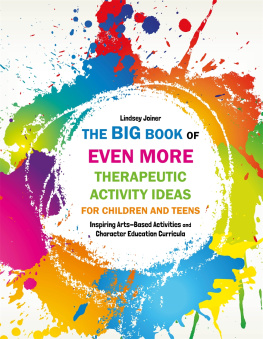
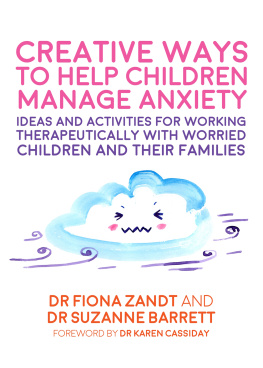

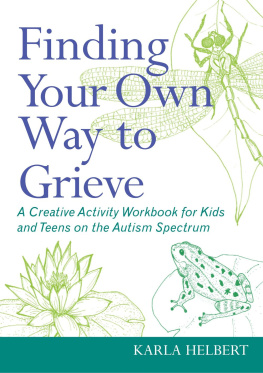
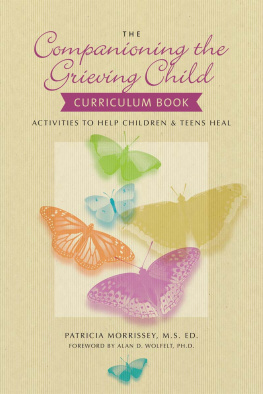


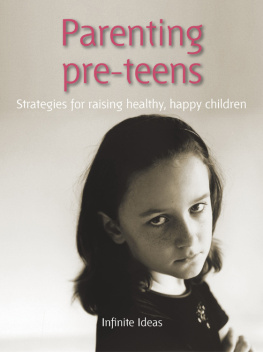

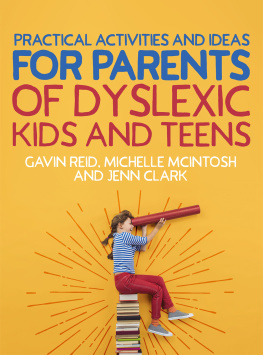


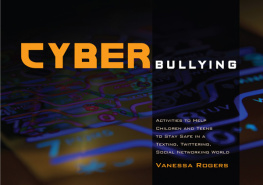


 , storing it in any medium by electronic means and whether or not transiently or incidentally to some other use of this publication) without the written permission of the copyright owner except in accordance with the provisions of the Copyright, Designs and Patents Act 1988 or under the terms of a licence issued by the Copyright Licensing Agency Ltd, Saffron House, 610 Kirby Street, London EC1N 8TS. Applications for the copyright owners written permission to reproduce any part of this publication should be addressed to the publisher.
, storing it in any medium by electronic means and whether or not transiently or incidentally to some other use of this publication) without the written permission of the copyright owner except in accordance with the provisions of the Copyright, Designs and Patents Act 1988 or under the terms of a licence issued by the Copyright Licensing Agency Ltd, Saffron House, 610 Kirby Street, London EC1N 8TS. Applications for the copyright owners written permission to reproduce any part of this publication should be addressed to the publisher.